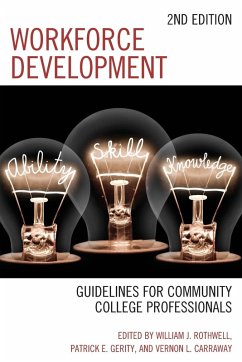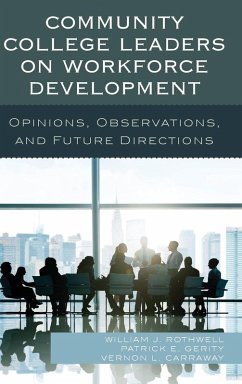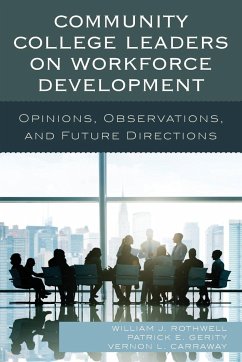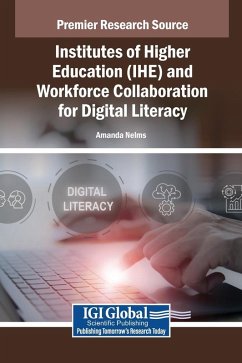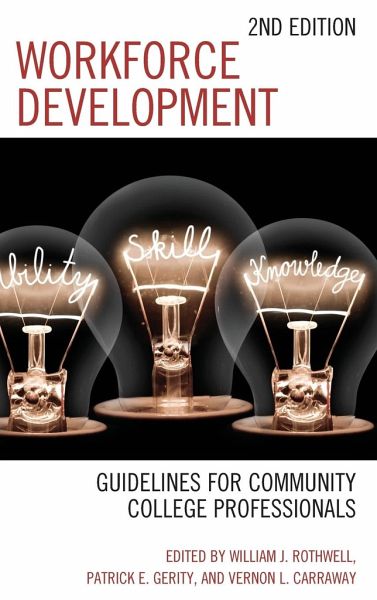
Workforce Development
Guidelines for Community College Professionals
Herausgeber: Rothwell, William J.; Carraway, Vernon L.; Gerity, Patrick E.
Versandkostenfrei!
Versandfertig in 1-2 Wochen
59,99 €
inkl. MwSt.

PAYBACK Punkte
30 °P sammeln!
This book is intended to provide a grounding for community college workforce developers—and others in community colleges who bear workforce development responsibilities. These "others" may include Boards of Director members, Community College Presidents, Deans and Department Heads and even Community College faculty members.



